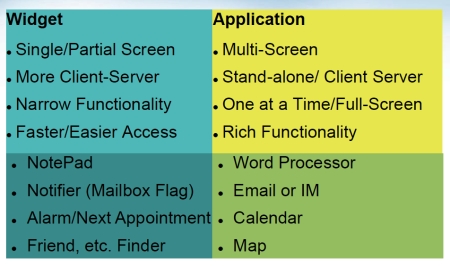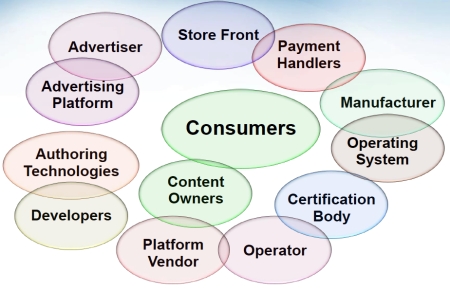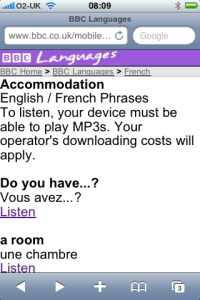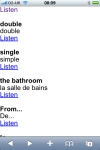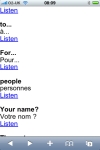

City University and Human Factors International co-hosted “Mobile Persuasion”
Persusasion, Emotion, and Trust are the design rage, but how are they applied to mobile user interfaces? Influential speakers came together to present their views in brief presentations on 19 January 2009.
This blog posting has videos for all three presentations, as well as compressed PDFs. At the top of the posting is a simple speakers list, and below are full descriptions and bios. At the bottom are two great write-ups by James Cooper for mjelly and Tom Hume for his eponymous blog.
Speakers
>Priya Prakash, Head of Product, Flirtomatic
>Creating a persuasive service interface in mobile
>Video of Priya’s presentation
>Priya’s slides
>Bryan Rieger, Co-Founder & Creative Director, Yiibu
>The “artist/craftsman” point of view on Persuasive Design
>Video of Bryan’s presentation
>Bryan’s Slides
>Kath Straub, Ph.D., Chief Scientist of Human Factors International
>How to design for Persuasion, Emotion, and Trust: drives & blocks, design markers, and good and bad real world examples
>Video of Kath’s presentation
>Kath’s slides
Detailed Descriptions
>Priya Prakash, Head of Product, Flirtomatic
>Creating a persuasive service interface in mobile
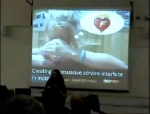
Video of Priya’s presentation
>Priya’s slides
The mobile paradox is that the massively reduced screen real estate makes creating persuasive services much harder than on the desktop web. There is simply less room and time to create trust. And of course the user is only too well aware that they are paying for the priviledge…. This talk will examine the challenges as they have applied to a live mobile service – Flirtomatic.
Bio: Priya enjoys creating consumer-facing services that combine content, social media and cross-platform distribution in new formats. At BBC as implementation manager, innovation executive and UXD lead she worked on the launch of services such as- iPlayer, Project Kangaroo and BBC Mobile portal. Later as Digital creative director at Hachette Filipacchi, she developed Sugarscape a social bookmarking site. Having worked hard at getting traditional media companies to listen and engage in new kinds of conversations with their consumers, in 2008 she joined mobile startup Flirtomatic- as Head of Product, to help drive user revenues and improve its user experience. Prakash is a fellow of the Royal Society of Arts with a MA in Interaction Design from Royal College of Art.
>Bryan Rieger, Co-Founder & Creative Director, Yiibu
>The “artist/craftsman” point of view on Persuasive Desig

Video of Bryan’s presentation
>Bryan’s Slides
“If driving a BMW promises the consumer ‘Sheer Driving Pleasure’ (formerly the ‘Ultimate Driving Machine’), what does your mobile phone promise (and more importantly what does it deliver)? Where are the craftsmen, dreamers and lunatics who inspire (and persuade) us to ‘think differently’?”
Bio: Bryan is a designer and researcher with a background in theatre design and classical animation. He has over 15 years’ experience in design and development and has worked across all media, including print, video, multimedia, the internet and mobile. Bryan has worked with clients such as Apple, Microsoft, Nokia and Monotype. He became obsessed with all things mobile while on sabbatical in South East Asia in 2003 watching people do simply amazing—and unexpected things—with their mobile devices. Although he’s adopted Bangkok, Thailand as his official home-away-from home Bryan currently lives in London, UK where he runs Yiibu – a small mobile design studio, with his partner Stephanie.
>Kath Straub, Ph.D., Chief Scientist of Human Factors International
>How to design for Persuasion, Emotion, and Trust: drives & blocks, design markers, and good and bad real world examples

Video of Kath’s presentation
>Kath’s slides
Bio: Kath has 15 years of empirical research experience overlaid on 10 years of project management and interface design experience. She’s taught extensively and designed curricula both for university and industrial/commercial settings. Her clients include government agencies, companies in pharmaceuticals, aviation, finance, health and medicine, and education. She currently leads a team of usability and accessibility professionals, graphics artists, and project managers working on projects for clients throughout the world. Kath approaches usability as the intersection of experimental cognition, social psychology, marketing, and technology.
Last but not least, great write-ups:

Great write-up by James Cooper for mjelly

Great write-up by Tom Hume for his blog


